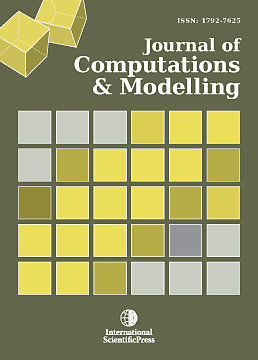Journal of Computations & Modelling
Operational Level of War: A Tool for Planning and Conducting Wars or an Illusion?
-
 [ Download ]
[ Download ]
- Times downloaded: 14333
-
Abstract
The operational level of war is a relatively new military principle introduced to the military lexicon by the US Army in 1982, almost out of the blue sky. Since then, the term was adopted first by the English speaking countries, and then by the NATO and eventually by the rest of the worlds militaries. Before 1982 the term used by the military professionals and theorists around the world, including the American military establishment, was operational art. The latter was used for the first time by the Soviets in conjunction with the much wider terms deep operations and deep attack. The theory of deep operations was developed in the 20s and 30s based on the experience of the newly established (in fact renamed) Red Army from First World War, the Russian civil war and the often forgotten Russo-Polish war of 1919-1921. A series of Soviet theorists, including Mikhail Frunze, Aleksandr Svetsin, Mikhail Tukhachevsky and Vladimir Triantafillov ended up with the theory of deep operations which survived up until the dissolution of the Soviet Union. The art of conducting deep operations was named operational art. For centuries the understanding was that war was planned and executed at two distinct levels, namely the strategic and the tactical level. Though this division of war was practiced by military leaders for centuries, it was theoretically documented by the great Prussian theorist and practitioner of war Carl von Clausewitz in his monumental work On war. In his work, he defined strategy as the use of engagements for the object of the war and tactics as the use of armed forces in the engagement. While the definition of tactics remained unchanged until today, the one of strategy progressively changed because of major changes in the character of war and finally made space for another level, the operational level of war. For the most part of the history of warfare, the dominant strategy of war was the single point strategy of the decisive battle. According that, the general, who was the political and at the same time the military leader, led its army to a predefined place, at a predefined time, to meet the whole of the enemy army, in one decisive battle, whose outcome would produce also a decision for the war. The actual plan and execution of the battle was the realm of tactics. The single point strategy of the decisive battle survived, in one way or the other, until the Napoleonic wars. The cataclysmic changes in warfare of this era led to subsequent changes in strategy. The enormous increase in the number of armies the nation-states were able to field and the improvement of the European road infrastructure led to important changes in the way the strategic commander conducted the war. Instead of the army moving in one column, it was divided in Corps, which, led by a lesser general, was sustained and moved independent towards the place chosen by the strategic commander to meet the enemy for the decisive battle. Even so, the strategy remained the use of engagements for the object of the war as defined by Clausewitz. The last battle fought in this way was the battle of Koningratz won by Moltke the Elder on behalf of the Prussian King against the Austrians. Eventually the corps not only moved independently, but started fighting a series of battles for the purpose of the war independent of the rest of the army. This series of battles fought by parts of the army was called operations, and the art of conducting them operational art. The strategic commander, instead of planning and executing battles for the purpose of the war, he started planning and executing operations. With this new development, the war was planned and executed at three levels, the strategic, the operational and the tactical level. It is obvious that the idea of dividing the planning and execution of the war into three levels was developed within the context of the industrial or 14lexiglas14n war. The question we need to ask ourselves, and most important to answer, is if this sort of distinction is applicable to other types of war. As noted by Martin van Creveld, the majority of the wars conducted worldwide after Second World War were of the type called limited war or Low Intensity Conflict. Even worst, the Armed Forces are progressively used in operations collectively characterized under the terms Military Operations Other Than War (MOOTW) or Peace Support Operations (PSO). The requirements for these new types of war are radically different vis-à-vis the old industrial or Trinitarian wars, causing doubts about the validity of the principle of the three levels of war. A thorough analysis of all factors involved shows that the principle of the tree levels of war should be applied with caution and on a case by the case basis, especially for Low Intensity Conflicts, MOOTW and crisis management operations, depending mainly on the purpose of the specific war decided by the politicians and pursued by the military.
